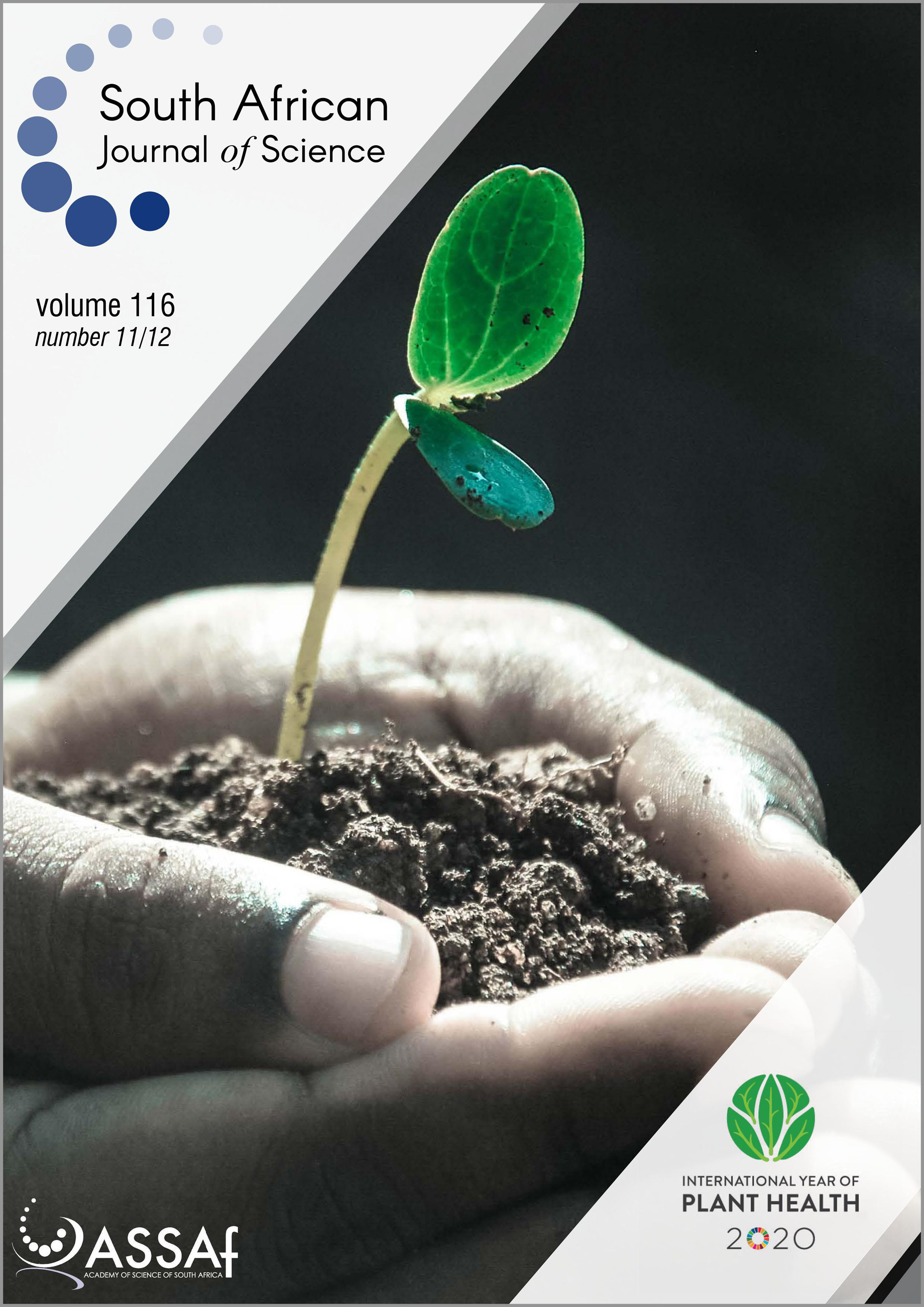Occurrence and spread of the banana fungus Fusarium oxysporum f. sp. cubense TR4 in Mozambique
DOI:
https://doi.org/10.17159/sajs.2020/8608Keywords:
Fusarium wilt, Foc TR4, Africa, plant resistance, disease spreadAbstract
Fusarium wilt, caused by the soil-borne fungus Fusarium oxysporum f. sp. cubense (Foc), poses a major threat to banana production globally. A variant of Foc that originated in Southeast Asia, called tropical race 4 (TR4), was detected on a Cavendish banana export plantation (Metocheria) in northern Mozambique in 2013. Foc TR4 was rapidly disseminated on the farm, and affected approximately half a million plants within 3 years. The fungus was also detected on a second commercial property approximately 200 km away (Lurio farm) a year later, and on a small-grower’s property near Metocheria farm in 2015. Surveys in Mozambique showed that non-Cavendish banana varieties were only affected by Foc race 1 and race 2 strains. The testing of Cavendish banana somaclones in northern Mozambique revealed that GCTCV-119 was most resistant to Foc TR4, but that GCTCV-218 produced better bunches. The occurrence of Foc TR4 in northern Mozambique poses a potential threat to food security on the African continent, where banana is considered a staple food and source of income to millions of people. Cavendish somaclones can be used, in combination with integrated disease management practices, to replace susceptible Cavendish cultivars in southern Africa. The comprehensive testing of African cooking bananas for resistance to Foc TR4 is required, along with the improvement of biosecurity and preparedness of growers on the African continent.
Significance:
- This paper presents the first official report of the invasive pest Foc TR4 in Africa.
- The spread of Foc TR4 on Cavendish banana farms in Mozambique was documented.
- Banana varieties that could replace susceptible Cavendish bananas were identified.
Published
Issue
Section
License

All articles are published under a Creative Commons Attribution 4.0 International Licence
Copyright is retained by the authors. Readers are welcome to reproduce, share and adapt the content without permission provided the source is attributed.
Disclaimer: The publisher and editors accept no responsibility for statements made by the authors
How to Cite
- Abstract 2625
- PDF 1340
- EPUB 153
- XML 301












.png)